Sudden advertising in your video on Youtube: why it appears and how to remove it
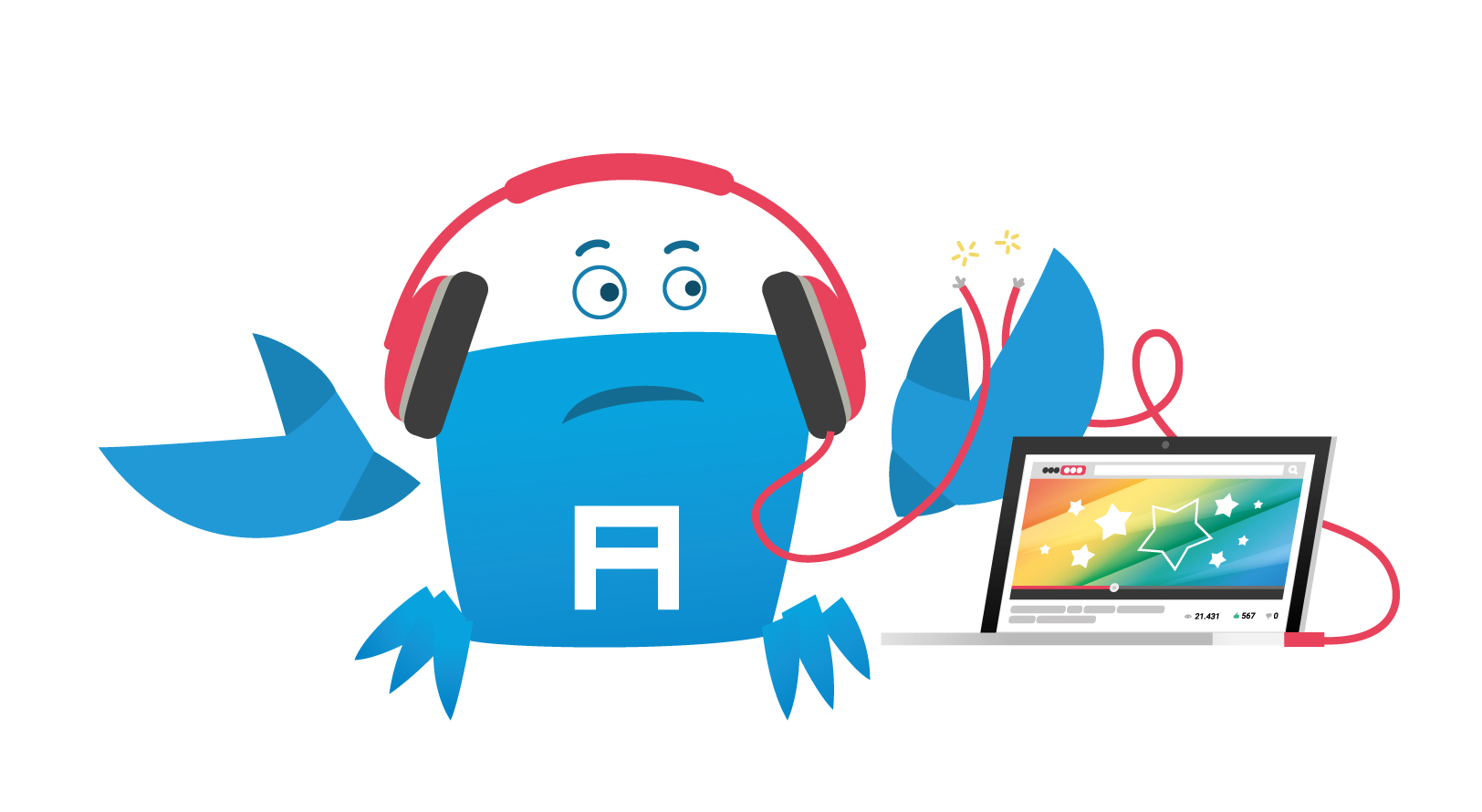
In this post we will explain why in your video could suddenly appear ads or turn off the music, and tell you what can be done to return everything as it was.
We in Alconost make videos on a turnkey basis : we write the script, we record the announcer, we create the animation, we select the music track. Most often, we buy tracks (or more precisely, a license to use the track chosen by us and approved by the client) on Audiojungle.net or PremiumBeat.com.
Already more than a year - from April 2015 - a new feature began to appear in the description of the tracks on Audiojungle: Youtube Content ID (details below).
Once in one of our videos - A Day in the Internet - extraneous advertising appeared (visible to all viewers of the video) and the note “coincidence with third-party content” (visible only to us through the video management interface on Youtube). By third-party content was meant music that sounds in the video. In the video, a track purchased at Audiojungle was used, but the purchase of a license for a track and video upload on Youtube took place more than two years ago - when the Content ID technology did not exist yet.
')
Although extraneous advertising is not such a big nuisance as blocking the channel , it is better to do without it. Let's look at how Content ID technology affects videos uploaded to Youtube that use music purchased from Audiojungle, and what to do about it.
What is Content ID
In short, Content ID technology allows copyright owners to track the use of their content on Youtube. The rights holder can be the author of the track itself or the company to which the author has delegated the protection of his rights.
You can read more about Content ID, for example, here or here .
If the system matches a track from your video with a track from its base, the video will receive a mark about third-party content and the measure provided by the copyright holder will be applied to the video. This may be, as in our case, the appearance of advertising - either muting the sound or even blocking the video. To get rid of all this, you need to show your rights to use the track to the system.
How Content ID technology is related to tracks on Audiojungle
How to prove that the track with Audiojungle is used in your video legally? An exhaustive answer to this question we found here .
In short, everything looks simple. When you buy music on Audiojungle, you are given a license certificate along with the track, which contains the purchase identification code. You receive this certificate regardless of whether the track has a Content ID or not.
If the track you purchased in your video on Youtube is marked as “third-party content”, you open the certificate, copy its contents and paste it into a special form on Youtube (step by step instructions below). After a while, the advertisement from the video will disappear.
However, the smoothness of the situation is disturbed by one inconvenience. Tracks that previously did not have Content ID, they gradually begin to acquire. Therefore, a complaint may even appear to a video clip that was uploaded to Youtube before the content ID feature appeared in the track used in the video.
Digging into the archive of your purchases at Audiojungle, finding a license and entering its number in the right field is a matter of a couple of minutes, it's easy. But what is really inconvenient is that preventive measures cannot be taken. Yes, you can file an objection to an existing complaint. But if at the time of the publication of the video, the music sounding in it did not have the Content ID parameter - you cannot prevent the appearance of a complaint (and therefore the appearance of an advertisement). Or have we just not realized how this can be done?
If you know how to claim your rights to music in an already published video before a complaint appears - please share your experience in the comments.
How to resolve a licensed music dispute in your video on Youtube (step by step instructions)
Let's see where to press, what to copy and where to insert, so that the label “coincidence with third-party content” doesn’t put off eyes, and the appearance of advertising does not spoil a beautiful movie.
Please note: Youtube updates its Russian localization from time to time, so when you read this article, the links and buttons may have different names.
1. Log in to Youtube, go to your channel and go to the “ Video Manager ” section (button at the top, next to the view counter).
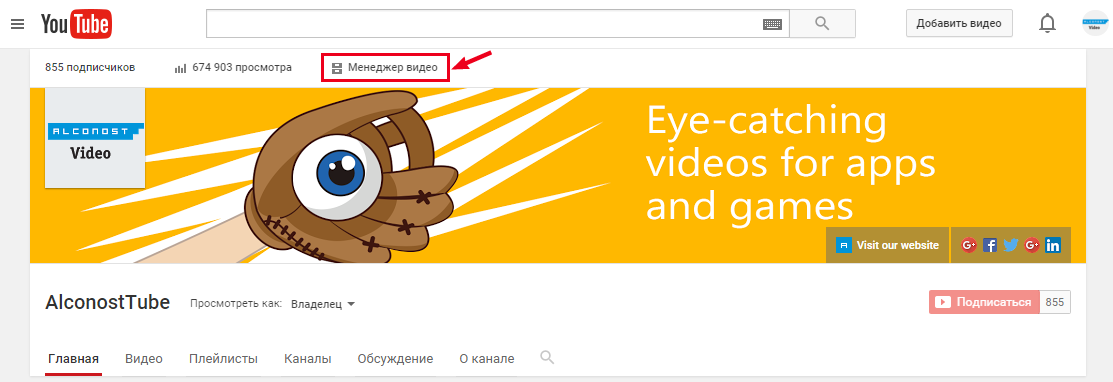
2. In the “Video Manager” (left column) click on “ Copyright ”. A list of videos for which there is a complaint. Click on the link "Video contains copyrighted material" (in our case the link was called "Coincidence with third-party content").

3. We review the essence of the claim, remember or copy a line from the Content item (this is the track name and the author's name, they will be useful in steps 6 and 7), click on the link “Submit an objection” (bottom right).

4. Acquaint yourself with the list of grounds for objection, select the item “I have a license or written permission from the copyright holder to use this material” and click “Continue”.
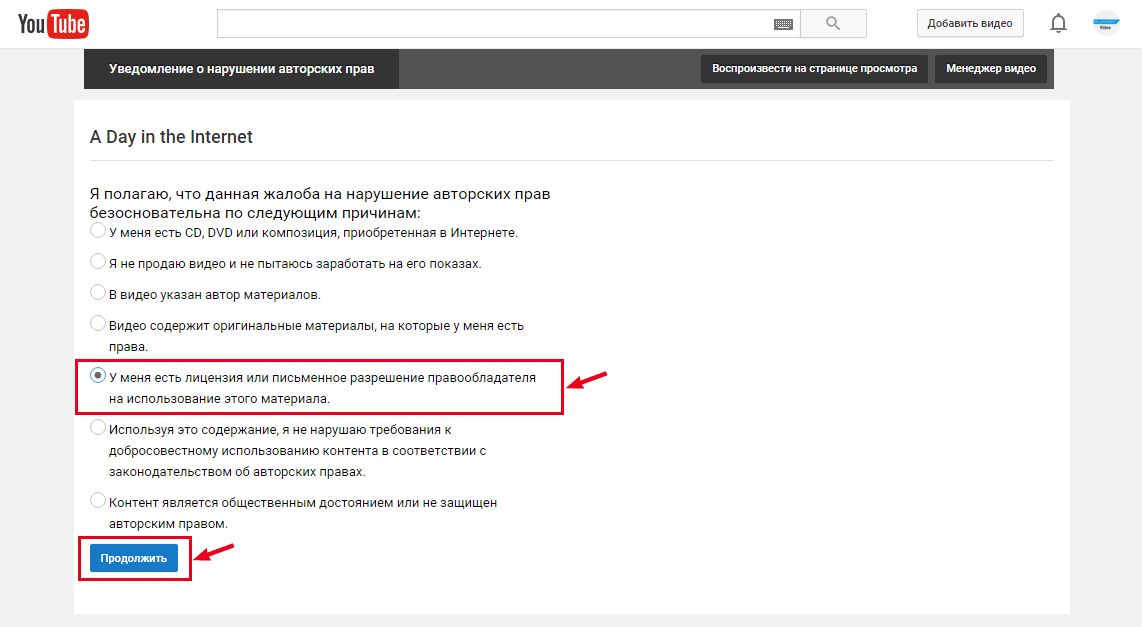
5. Check the box “I want to dispute this complaint, because I have the written permission of the copyright holder or license” and click “Continue”.
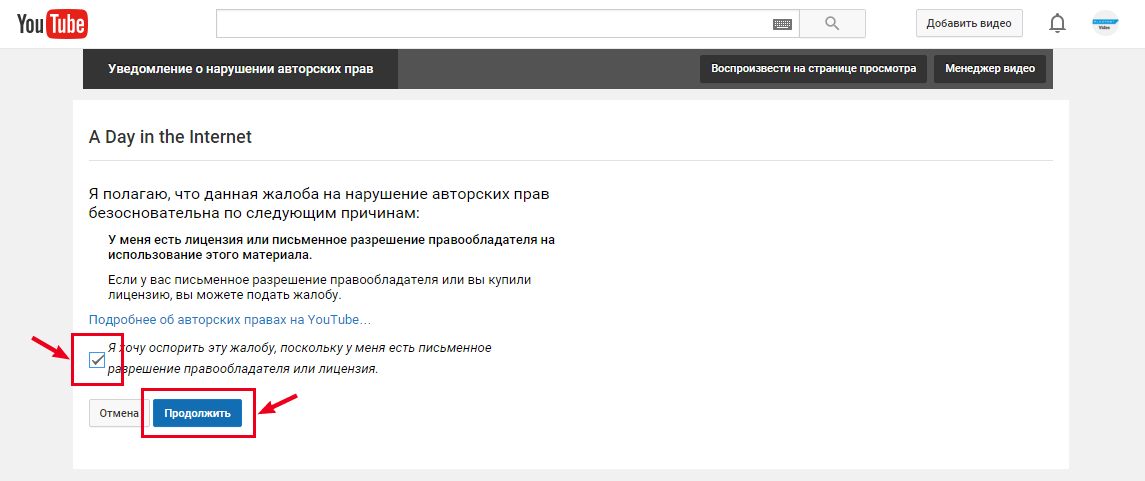
6. In another window, open your account on Audiojungle, go to the Downloads section and sort the downloads by name (sort by: Title). Looking at the name of the track (which we prudently remembered or copied in step 3), we look for the desired track in the list. Then click the Download button opposite the desired track and select the License license certificate certificate & purchase code (text).
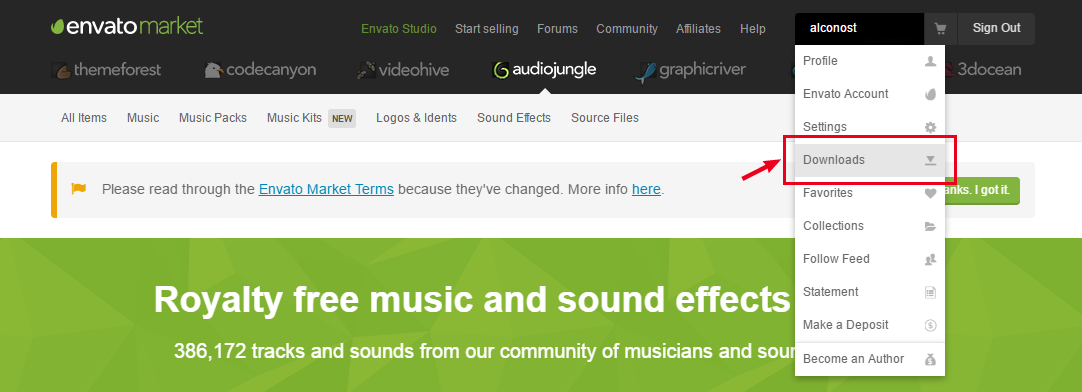
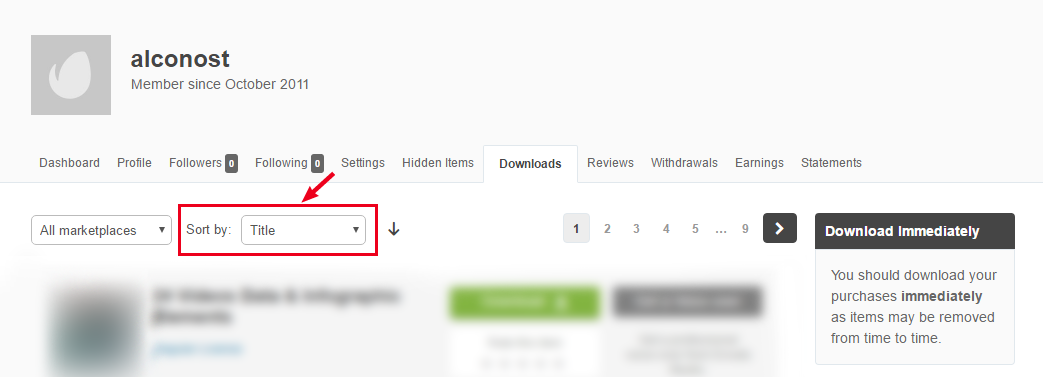
7. Go back to Youtube. In the form for a brief explanation, enter the text "A license to use this royalty-free music by [author] was purchased from AudioJungle.net" (the name of the music author is indicated in the license certificate in the Licensor's Author Username field). Slightly lower in the same form - insert the full text of the license certificate. Next, tick the remaining items, put a signature and click "Continue".

8. Check the completed form. If you forgot to specify something or made a typo - click "Back." If everything is correct, click "Submit Objection".
9. Youtube is worried that we will double-check everything three times, and it will give you a pop-up window with confirmation of the action (if you have a pop-up blocker, it probably makes sense to turn it off for this step). Recheck the contents of the complaint again and, if everything is OK, confirm this.
10. Finally, a page appears on the page with the text “Reply to the copyright dispute has been sent.”
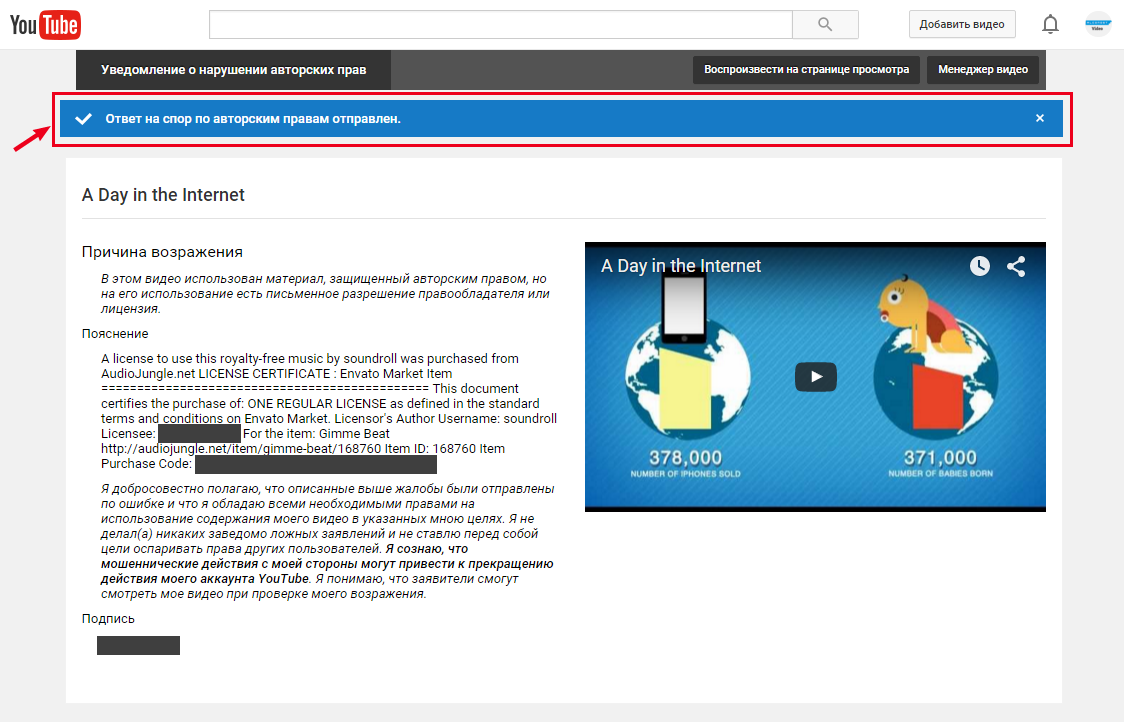
11. Now when you click on a claim in this video will display the status of the complaint.
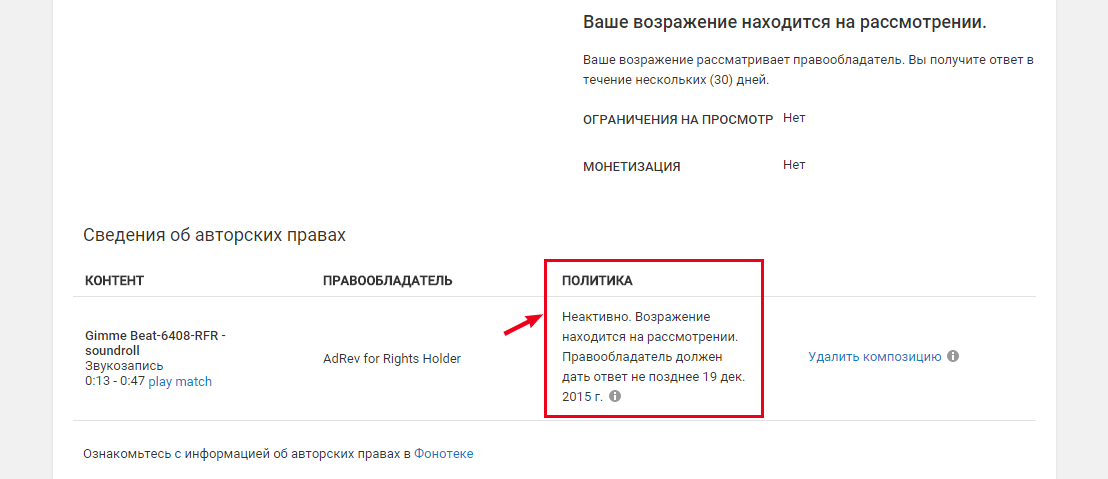
What will happen next - obviously, there are several scenarios. In our case, it was like this: we received a letter from Youtube with the subject “[Complaint of copyright infringement]. The application for the video“ A Day in the Internet ”was withdrawn . The letter contained the following notice:
"Good news! It has been 30 days since your objection to the copyright infringement complaint, and the copyright holder has not responded to it. This means that your arguments are automatically accepted and the complaint is dropped . ”
findings
1. Be sure to save the license certificates for music.
As you can see, the certificate may be necessary, even if, since the purchase of the track, you managed to marry and have children - and even if the track simply did not have the Content ID parameter at the time of purchase. It's good that Audiojungle automatically saves the purchased tracks in your account and you can download the license certificate at any time.
2. If you order a video from a studio, a freelancer or a friend - ask for a certificate of music when you accept work.
First of all, you will be sure that licensed music is used in your video. Secondly, you can solve the problem with sudden advertising as quickly as possible. Again: even if your video uses music without the Content ID parameter, the appearance of this characteristic is only a matter of time. If you have a certificate, you can solve the problem quickly and independently, without slowing down the agency and not waiting for them to find the certificate.
3. If it is not possible to get a certificate - there are other options.
As can be seen in the screenshots, besides filing a complaint, there is also another option - turn off the music in the video (the button “Delete song”). This is also quite a compromise. And in order not to stay with the dumb video - you can contact us for re-sounding the video . We will select a new track, add sound effects and give you a license certificate for a new music in your video.
If you have encountered other reasons for the appearance of the mark “coincidence with third-party content” and your problem was solved in a different way - please share your experience in the comments.
about the author
Alconost is engaged in the localization of applications, games and websites in 60 languages. Language translators, linguistic testing, cloud platform with API, continuous localization, 24/7 project managers, any formats of string resources.
We also make advertising and training videos - for websites selling, image, advertising, training, teasers, expliners, trailers for Google Play and the App Store.
Read more: https://alconost.com
Source: https://habr.com/ru/post/302348/
All Articles